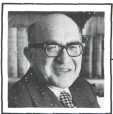 By MILTON RAKOVE By MILTON RAKOVE

By law, the council is charged with the task of preparing the ward map for the representation of Chicago's declining and changing population. The city has lost about 360,000 people since the 1970 census and has declined from a peak of 3,600,000 in 1950 to 3,000,000 in 1980. The black population in that 30-year period increased from 400,000 to 1,300,000. And the Latino population, which was negligible in 1950, totaled about 420,000 in 1980, if the census figures can be believed. Most sophisticated observers of the Chicago scene believe that the Latino population is really somewhere between
800,000 and 1,000,000. Given those realities, it is clear that the white ex-odus to the suburbs is continuing, is probably increasing and will never be reversed.
The power structure of the city, however, remains heavily white ethnic both politically and governmentally, and white Protestant economically. The blacks have become a major factor in the city's life socially and have gained some influence politically and governmentaly, but have not been able to translate their growth in numerical strength into real political, governmen-tal and economic power in the city. In-deed, it could be argued that real black political and governmental power in the city has declined relatively over the past 30 years. The Latinos, who con-stitute a major segment of Chicago's population, are practically irrelevant in the city's political, governmental and economic power structures. As for the Jews, they exist on the periphery of the system politically, are secondary the white Protestant overlords of the city economically and are subordinate to the Irish and other ethnics governmen-tally. Two other ethnic groups, the Poles and the Italians, share some political and governmental status with the Irish, but they are content with their own secondary piece of the pie. They are subservient to the Irish who have retained control of the inner sanc-turn of the political and governmental processes and to the white Protestants who have continued to dominate the corporate structure of the city. And the blacks have generally accepted a tertiary role in the life of the city, trying to go along and get along with those who hold real political, governmental and economic power in Chicago.
The dynamics of those underlying cultural, social, economic and political forces in Chicago's body politic are behind the allocation of governmental power in Chicago and have dictated the new map for Chicago's aldermanic districts. The map was prepared, not by the council, but by former alder-man, committeeman and council floor leader, Thomas Keane (now 76 years old), who performed a similar task for Mayor Richard J. Daley in the political machine's heyday of the Daley years. Keane, a shrewd and brilliant lawyer-politician-parliamentarian, was assisted by Martin Murphy, the city planning commissioner. They drew a map which addressed and conciliated the two major conflicting thrusts of the Democratic political machine's objectives in Chicago — the retention of real political and governmental power in Chicago by the white ethnics, led by the Irish, and the palliative pacification of those elements of the black and Latino communities which are safe politically and ambitious personally. They left the blacks with 16 or 17 aldermanic seats, most of which are held by machine stalwarts.
Keane and Murphy gave the Latinos the possibility of electing two aldermen, one Mexican and one Puerto Rican. And they guaranteed the probably reelection of almost every white ethnic alderman on the council. The small band of anti-machine liberal aldermen should not expect to elect any new aldermen and may lose some under the new map.
The council accepted Keane's (and Byrne's) map almost sight unseen, with minor adjustments made to pacify and compensate a few possibly aggrieved machine aldermen who were concerned about the allocation of key precincts and minor boundary questions. The message of the map is clear for Chicago's political and governmental system for the next decade: The status is quo. The white ethnics intend to retain control; the black drive for power and control will be contained by continued emasculation of opposition through some sharing of the perquisites of politics; Latinos will be thrown a bone or two to chew on; and the dwindling band of liberal independents will continue to be ignored. As for the council itself, it will undoubtedly continue to be what it has traditionally been in the past: somewhat unrepresentative of the city's demographic makeup but reflective of the racial, ethnic and religious fragmentation of the community, and irrelevant to the process of policy formulation and problem solving in Chicago. □
4/January 1982/Illinois Issues
|


 By MILTON RAKOVE
By MILTON RAKOVE